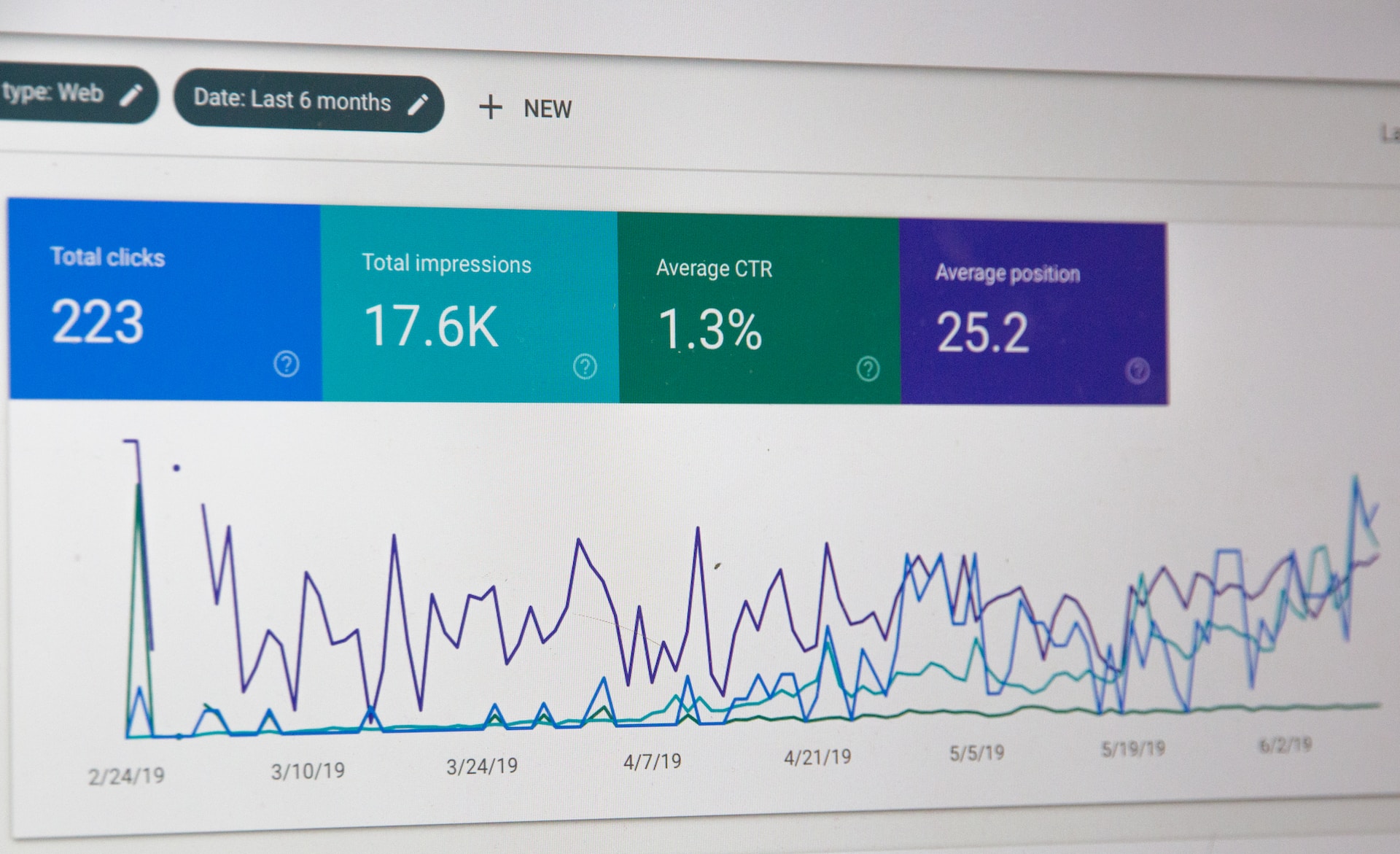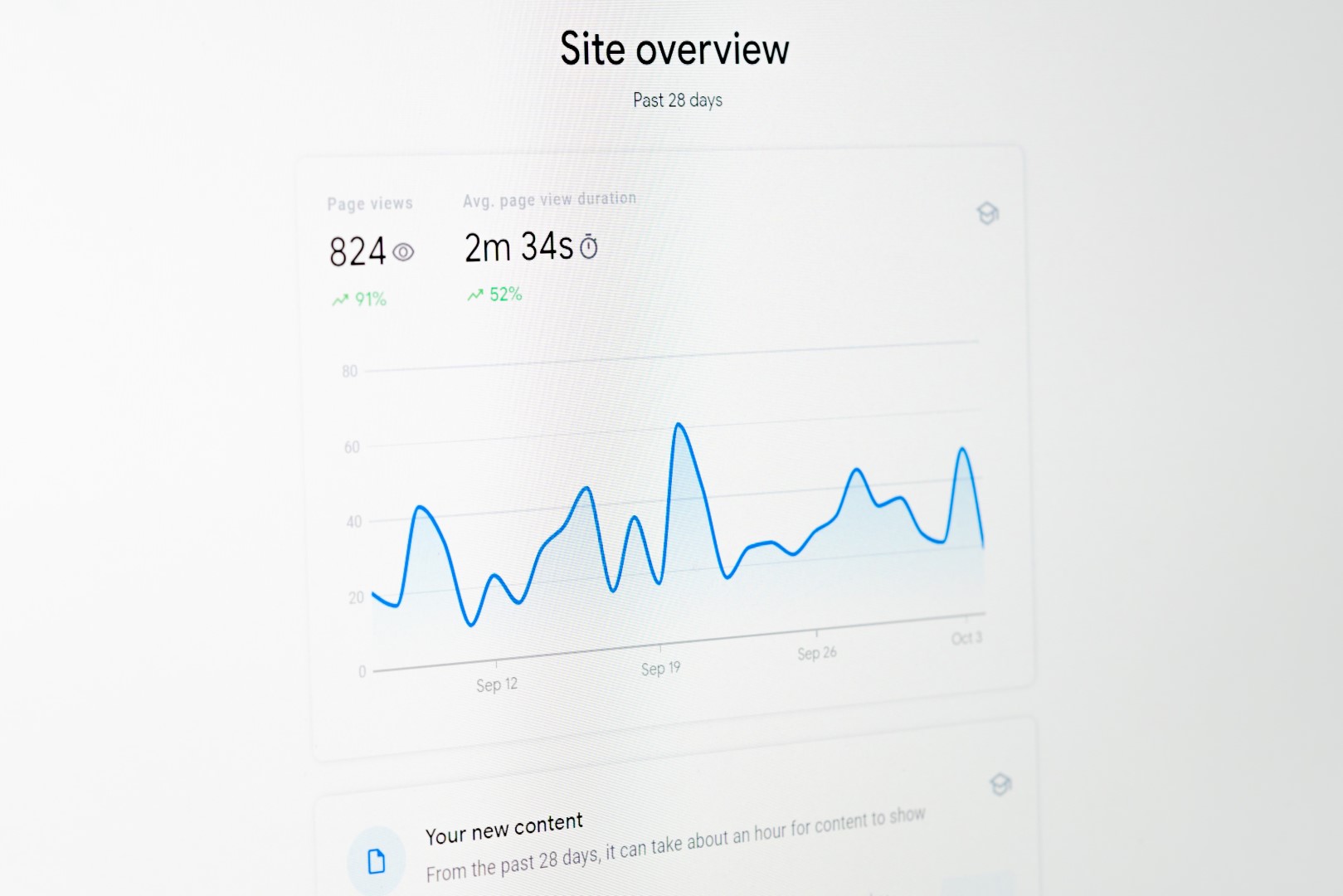
In the digital age, websites have become essential tools for businesses and individuals alike. However, merely having a website is not enough to ensure success. To thrive in the competitive online landscape, it is crucial to monitor and analyze website performance continuously. This is where website analytics come into play. Website analytics is the process of collecting, measuring, and interpreting data about website visitors and their interactions. In this article, we will explore the importance of website analytics and how it can be utilized to track and measure website success effectively.
Understanding Website Analytics
Website analytics offer valuable insights into the behavior of website visitors, helping website owners make informed decisions. By tracking various metrics, it is possible to gain a comprehensive understanding of how users interact with a website. Some of the key metrics include:
- Key Performance Indicators (KPIs): These are specific data points that measure the performance of a website in achieving its objectives. Common KPIs include conversion rates, bounce rates, average time on page, and the number of new vs. returning visitors.
- Web Traffic Metrics: These metrics provide information about the volume of visitors and the sources they come from. Understanding traffic sources, such as organic search, social media, and referrals, helps in optimizing marketing efforts.
- User Engagement Metrics: These metrics measure how engaged users are with the content on the website. Metrics like pages per visit, average session duration, and click-through rates shed light on user behavior.
- Conversion Metrics: The ultimate goal of a website is to convert visitors into customers or leads. Conversion metrics, such as lead form submissions, purchases, or sign-ups, reveal how effective the website is in achieving this goal.
Choosing the Right Website Analytics Tools
Several website analytics tools are available, ranging from free to premium options. The choice of tools depends on the complexity of your needs and budget. Some of the popular website analytics tools are:
- Google Analytics: One of the most widely used and robust analytics platforms. Google Analytics offers a wealth of data and insights for both beginners and advanced users.
- Adobe Analytics: A powerful enterprise-level analytics solution that caters to large organizations with complex data needs.
- Matomo (formerly Piwik): An open-source analytics platform that provides data ownership and complete control over website data.
- Mixpanel: Specializes in event tracking and user analytics, making it ideal for mobile apps and SaaS products.
- Other Notable Analytics Tools: Various other tools, such as Hotjar, Crazy Egg, and Kissmetrics, offer unique features and are worth exploring based on specific requirements.
Implementing Website Analytics
Implementing website analytics involves setting up an analytics account and installing the tracking code on your website. The process typically involves the following steps:
- Setting Up Your Analytics Account: Create an account with the chosen analytics platform and configure the necessary settings.
- Installing Tracking Code: Obtain the tracking code from the analytics platform and add it to your website. This code allows the platform to collect data about visitor interactions.
- Handling Data Privacy and GDPR Compliance: Ensure that your website complies with data protection regulations and respect users’ privacy. Implement cookie consent banners and other measures as necessary.
Navigating Google Analytics
For the purpose of this article, we will focus on Google Analytics, given its widespread use and popularity. Navigating through Google Analytics can seem overwhelming at first, but understanding its key sections will make the process more manageable:
- Understanding the Dashboard: The dashboard provides a summary of essential metrics, including real-time visitors, traffic sources, and user behavior.
- Exploring Audience Reports: These reports offer insights into the demographics, interests, and location of your website visitors.
- Analyzing Acquisition Sources: This section details how visitors arrive at your website, whether through organic search, social media, paid advertising, or other channels.
- Assessing Behavior Flow: The behavior flow report illustrates how users navigate through your website, revealing common paths and drop-off points.
- Tracking Conversions and Goals: Set up conversion goals to track specific actions that indicate successful interactions on your website, such as completing a purchase or signing up for a newsletter.

Interpreting Website Analytics Data
The abundance of data collected by website analytics can be overwhelming without proper interpretation. To gain actionable insights, consider the following practices:
- Identifying Key Insights: Focus on key metrics that align with your website’s objectives and use them to drive decisions.
- Analyzing Bounce Rates and Exit Pages: High bounce rates and frequent exits from certain pages may indicate issues that need improvement.
- Uncovering User Behavior through Heatmaps: Heatmaps visually represent user interactions, such as where users click and how far they scroll, helping optimize design and content.
- Utilizing A/B Testing for Optimization: Experiment with different versions of your website elements to identify the most effective ones that lead to higher conversions.
- Evaluating Campaign Performance: Track the impact of marketing campaigns on website traffic, user engagement, and conversions.
Monitoring and Tracking Website Performance
Website analytics is not a one-time activity but an ongoing process. Regularly monitoring and tracking website performance is essential for continuous improvement. Some strategies include:
- Real-Time Analytics: Keep an eye on real-time data to monitor how users interact with your website at any given moment.
- Regular Reports and Dashboards: Set up automated reports and dashboards to receive insights at scheduled intervals, making it easy to stay updated on performance.
- Tracking E-commerce Performance: For e-commerce websites, monitoring sales data, conversion rates, and product performance is crucial for success.
- Mobile Analytics: Given the growing prevalence of mobile users, monitoring mobile analytics helps optimize the mobile user experience.
Website Analytics for SEO
Search Engine Optimization (SEO) is a crucial aspect of website success. Website analytics provides valuable data to assess the effectiveness of your SEO efforts:
- Measuring Organic Search Traffic: Understand how much of your website traffic comes from organic search results to gauge SEO performance.
- Analyzing Keywords and Rankings: Identify the keywords that drive traffic and how your website ranks for them in search engine results.
- Tracking Backlinks and Referral Traffic: Evaluate the quality and quantity of backlinks to your website and the referral sources that send traffic.
- Monitoring Local SEO Performance: For businesses with a physical presence, track local search performance and customer interactions.
Website Analytics for Content Strategy
Content plays a significant role in engaging users and attracting organic traffic. Website analytics helps measure content effectiveness:
- Assessing Content Engagement: Identify the most popular and engaging content on your website to guide future content creation.
- Identifying Popular Content: Understand which pages and blog posts receive the most traffic and engagement to tailor content strategy.
- Tracking Social Media Traffic: Measure the impact of social media efforts by analyzing the traffic driven to your website from various platforms.
- Evaluating Content Marketing ROI: Analyze the return on investment for your content marketing efforts based on engagement and conversion metrics.
Website Analytics for User Experience (UX)
A positive user experience is crucial for website success. Website analytics can reveal valuable insights about user behavior and interaction:
- Analyzing User Flow and Navigation: Understand the paths users take through your website and identify areas where they encounter obstacles.
- Understanding User Funnels: Track the steps users take to complete specific goals, such as making a purchase, to optimize the conversion process.
- Identifying Website Bottlenecks: Pinpoint areas where users frequently drop off or abandon their sessions, indicating potential issues with navigation or content that need to be addressed to enhance the user experience.
- Utilizing Feedback and Surveys: Collect user feedback through surveys and on-site feedback tools to understand user preferences, pain points, and suggestions for improvements.
Website Analytics for Conversion Optimization
Website analytics plays a pivotal role in optimizing conversions and achieving business goals:
- Tracking Conversion Rates: Continuously monitor conversion rates and identify trends to gauge the effectiveness of your website in converting visitors into customers or leads.
- Identifying Conversion Drop-offs: Analyze user behavior on the conversion path to identify specific stages where users drop off, helping you focus on areas that need improvement.
- Implementing Conversion Rate Optimization (CRO) Strategies: Use data insights to design and test different elements of your website, such as CTAs, forms, and landing pages, to maximize conversion rates.
- A/B Testing for Enhanced Conversions: Conduct A/B tests to compare the performance of different website variations and determine which ones resonate best with your audience.
Website Analytics for Mobile Websites and Apps
With the increasing use of mobile devices, website analytics for mobile websites and apps is essential:
- Mobile App Analytics Tools: Implement mobile app analytics tools to track user behavior, interactions, and retention within your mobile application.
- Analyzing Mobile User Behavior: Understand how mobile users engage with your website or app differently from desktop users and optimize accordingly.
- Mobile App Conversion Tracking: Implement conversion tracking for mobile apps to understand the impact of your app on your overall business objectives.

Using Website Analytics for Personalization
Website personalization enhances user experience and drives engagement:
- Implementing Personalization Strategies: Leverage website analytics to segment your audience and provide personalized content and recommendations based on user behavior and preferences.
- Targeted Content and Offers: Customize content and promotional offers to cater to specific user segments, increasing the likelihood of conversions.
- Personalized Email Marketing: Use website analytics data to tailor email campaigns and deliver relevant content to subscribers based on their past interactions.
Leveraging Website Analytics for Business Growth
Website analytics provides valuable data to align your website with your business objectives:
- Setting Smart Goals: Define clear and measurable goals for your website, and use analytics to track progress toward achieving them.
- Aligning Analytics with Business Objectives: Ensure that website analytics align with broader business goals and support decision-making.
- Identifying Opportunities and Trends: Analyze website data to identify growth opportunities and emerging trends in user behavior or market demand.
- Making Data-Driven Decisions: Rely on data insights rather than assumptions to make informed decisions about website design, content strategy, and marketing efforts.
Ensuring Data Security and Privacy
As data collection becomes more prevalent, ensuring data security and privacy is crucial:
- Best Practices for Data Protection: Follow industry best practices to secure data collected through website analytics and prevent unauthorized access.
- Handling Customer Data Responsibly: Treat customer data with utmost care and transparency, and communicate clearly about how data is used.
- Complying with Data Regulations: Adhere to data protection laws and regulations, such as the General Data Protection Regulation (GDPR), to safeguard user privacy.
Challenges and Limitations of Website Analytics
While website analytics provides valuable insights, it also comes with challenges and limitations:
- Dealing with Data Inaccuracies: Data collection may be affected by various factors, leading to inaccuracies that need to be considered when interpreting results.
- Analyzing Cross-Device and Cross-Channel Data: Tracking user interactions across different devices and channels can be complex but is essential for a holistic view of user behavior.
- Understanding User Intent: Analytics data may not fully capture user intent, requiring additional research and qualitative data to understand user motivations.
Future Trends in Website Analytics
The future of website analytics holds exciting possibilities:
- Artificial Intelligence and Machine Learning in Analytics: AI and ML algorithms will enhance analytics capabilities, providing predictive insights and automating data analysis.
- Advanced Segmentation and Predictive Analytics: More advanced segmentation techniques will allow for better targeting of specific user groups, while predictive analytics will anticipate user behavior.
- Integration of Offline and Online Data: Integrating offline and online data sources will provide a more comprehensive view of customer interactions across all touchpoints.
Case Studies: Successful Website Analytics Implementation
Real-life case studies demonstrate how website analytics can drive tangible results:
- E-commerce Website Optimization: A clothing retailer used analytics to identify high-traffic but low-converting product pages, leading to a redesign that significantly increased conversion rates.
- Content-Based Website Improvement: A blog used analytics data to discover the most popular topics and formats, resulting in more targeted content creation and increased user engagement.
- Mobile App Performance Enhancement: A ride-hailing app used mobile app analytics to optimize user onboarding and reduce drop-offs, resulting in higher app retention rates.
Conclusion
In conclusion, website analytics plays a vital role in measuring and enhancing website success. By tracking and analyzing various metrics, businesses and individuals can gain valuable insights into user behavior, identify areas for improvement, and make data-driven decisions. Whether it’s optimizing user experience, improving conversion rates, or personalizing content, website analytics empowers website owners to stay ahead in the digital landscape and achieve their business goals. Embracing website analytics as an integral part of website management is the key to unlocking its true potential and driving long-term success.
